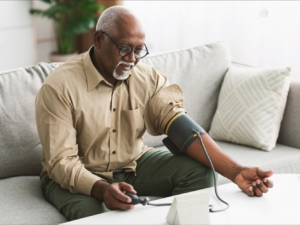Stroke, often perceived as a condition affecting older adults, can also occur in young individuals, albeit less frequently. Stroke in young adults presents unique challenges due to its unexpected nature and potential long-term implications
This essay explores the causes, challenges, and long-term implications of stroke in young adults, shedding light on the complex interplay of risk factors, diagnostic considerations, and psychosocial impacts.
Defining Stroke in Young Adults
Stroke in young adults is typically defined as a cerebrovascular event occurring in individuals under the age of 45 or 50, depending on the criteria used. While less common than in older age groups, stroke in young adults accounts for a significant proportion of all strokes worldwide.
Causes of Stroke in Young Adults
The causes of stroke in young adults differ from those in older adults and often involve a combination of traditional vascular risk factors and unique etiologies. Common causes include cardioembolic events, cervicocephalic arterial dissections, vasculopathy, genetic and hereditary conditions, substance abuse, and hypercoagulable states.
Challenges in Diagnosis and Management
Diagnosing stroke in young adults poses unique challenges due to the atypical presentation of symptoms, the lower index of suspicion among healthcare providers, and the lack of awareness about stroke risk in this age group. Additionally, delays in diagnosis and treatment may occur, leading to worse outcomes and increased disability.
Psychosocial Impacts and Quality of Life
Stroke in young adults can have profound psychosocial impacts, affecting relationships, employment, and overall quality of life. Young stroke survivors may face challenges such as depression, anxiety, social isolation, and financial strain, which can exacerbate the burden of the condition and impede recovery.
Rehabilitation and Long-Term Care Needs
Rehabilitation plays a crucial role in the recovery of young stroke survivors, helping them regain lost function and adapt to new limitations. However, access to comprehensive rehabilitation services may be limited for young adults, particularly in areas with resource constraints. Long-term care needs, including ongoing therapy, support services, and vocational rehabilitation, should be addressed to optimize outcomes.
Secondary Stroke Prevention and Management

Young stroke survivors require tailored secondary prevention strategies to reduce the risk of recurrent events. This may include lifestyle modifications, such as smoking cessation and regular exercise, as well as pharmacological interventions, such as antiplatelet therapy or anticoagulation, depending on the underlying cause of the stroke.
Addressing Underlying Risk Factors
Identifying and addressing underlying risk factors is essential in the management of stroke in young adults. This may involve screening for conditions such as hypertension, diabetes, dyslipidemia, and cardiac abnormalities, as well as genetic testing for hereditary stroke syndromes.
Impact on Family and Caregivers
Stroke in young adults not only affects the individual but also has a significant impact on family members and caregivers. Family dynamics may shift as roles and responsibilities change, and caregivers may experience emotional distress, burnout, and financial strain. Providing support and resources to caregivers is essential for ensuring their well-being and resilience.
Educational and Vocational Challenges
Young stroke survivors may face educational and vocational challenges as they navigate the aftermath of a stroke. Returning to work or school may be difficult due to cognitive impairments, physical limitations, or changes in functional status. Vocational rehabilitation programs can help individuals re-enter the workforce or pursue alternative educational opportunities.
Advocacy and Awareness Initiatives
Advocacy and awareness initiatives are essential for raising the profile of stroke in young adults and promoting early recognition and intervention. Public education campaigns, targeted outreach to healthcare providers, and support networks for young stroke survivors and their families can help increase awareness, reduce stigma, and improve outcomes.
Conclusion:
Stroke in young adults represents a significant health challenge with distinct causes, challenges, and long-term implications. Understanding the unique characteristics of stroke in this age group is essential for optimizing diagnosis, management, and rehabilitation efforts. ‘
By addressing the multifaceted needs of young stroke survivors, including psychosocial support, rehabilitation services, and secondary prevention strategies, healthcare providers can help improve outcomes and enhance the quality of life for this vulnerable population.
Related Tags
Taiwo Olawuyi
Taiwo Olawuyi is a highly dedicated and passionate professional blogger, renowned for her ability to create captivating, informative, and engaging content in the realm of health and wellness. She holds a Bachelor's degree in Political Science from Olabisi Onabanjo University and a Master's degree in Adult Education from the prestigious University of Ibadan. Her profound passion for health and wellness, coupled with her unwavering dedication to her audience, serves as a constant source of inspiration and enlightenment for readers worldwide.










